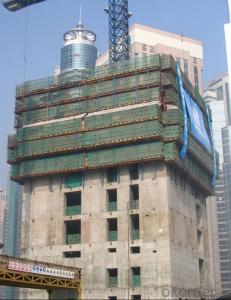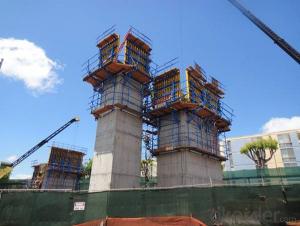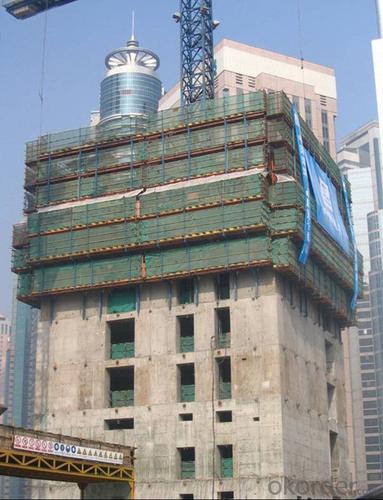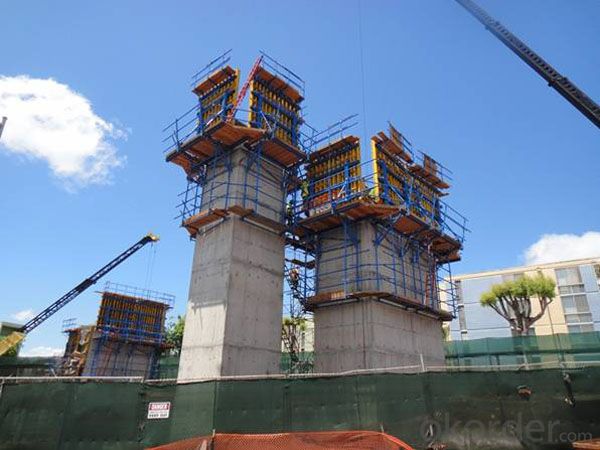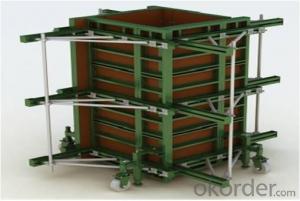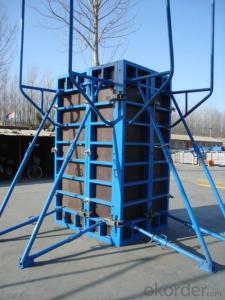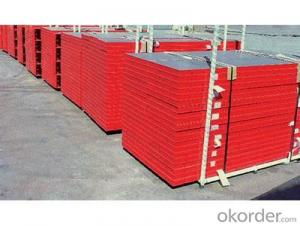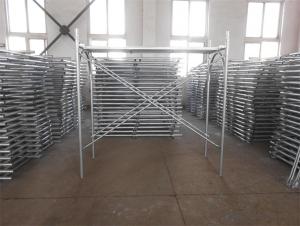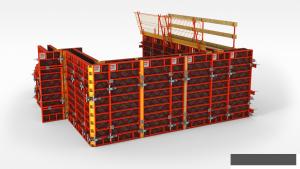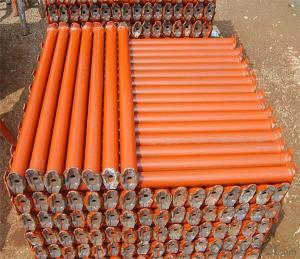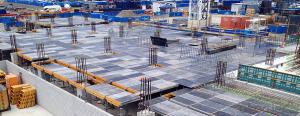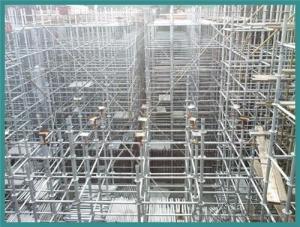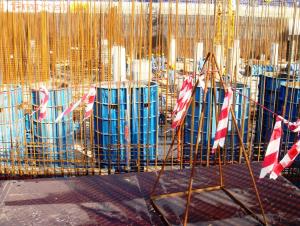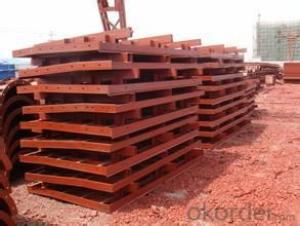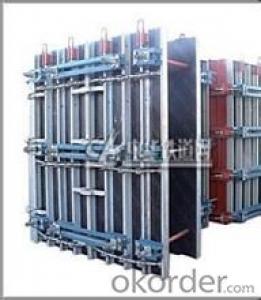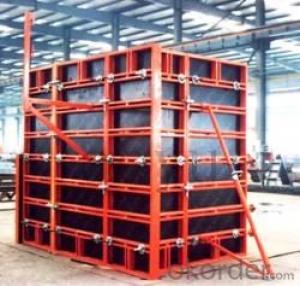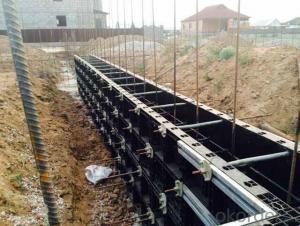Scaffolding Jack Base Formwork Scaffolding Equipment Names with New Design
- Loading Port:
- Tianjin
- Payment Terms:
- TT OR LC
- Min Order Qty:
- 8000 set
- Supply Capability:
- 50000 set/month
OKorder Service Pledge
OKorder Financial Service
You Might Also Like
Scaffolding Jack Base Formwork Scaffolding Equipment Names with New Design
Scaffolding For High-Rise Buildings Formwork Scaffolding Truss High Quality
Frame Scaffolding Systems Formwork Bs Standard Scaffolding Tube With Low Price
Developing with new technology materials, steel formworks is no longer a must in construction concrete process. More and more buildings are established with plastic formworks. And workers love this new formworks much more.
The advantages of plastic formworks:
Scaffolding Jack Base Formwork Scaffolding Equipment Names with New Design
1.First of all--light
Yes it is the first advantage of plastic formwork. It wins the great praise of both contractors and workers.
The biggest panel is 120×1500px,weights 10.5kg only. It can be lift and set up by one person easily, which means there is no need for cranes on site.Saves a lot of cost and time.
2.Easy set up
Different size of panels can firmly locked by simply turn the special handles to 90 degree. The Panels has rib on the back, which makes the system need not traditional wood blocks and nails. The panels have holes to fit tie rod, guarantee the strength of the whole system.
3.Modularity
Modular formworks composed by different size of panels,the main item is 120×1500px panel,which is used for the large area of walls and slabs. There are also small size of panels like 10×1500px,20×1500pxcm,25×1500px,inner corner 20×20×1500px and outer corner 10×5×1500px.Due to the variety of panel size, the system can form almost all size walls 120×1500px panel of multiply by 125px. The material of modular formwork is PC-ABS mixed with special glass fibers which enable panels to hold high pressures.
4.Strength
The handles are made by high strength Nilon, each panel locked by at least 4 handles, which makes the whole system strong enough to pour 1000px walls.
5.Environment friendly
The system needs no cut and nail due to the variety size. Also it needs nearly no wood. The material can be recycled after broken, so it will not pollute the environment.
6.Consequent
Concrete does not stick to plastic formwork, thus the panels need no oil before using, and can be cleaned simply by water. The surface of the wall which build by modular formwork is smooth and without rework.
Scaffolding Jack Base Formwork Scaffolding Equipment Names with New Design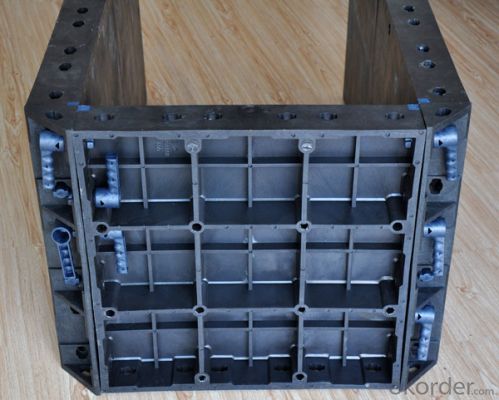
Scaffolding Jack Base Formwork Scaffolding Equipment Names with New Design
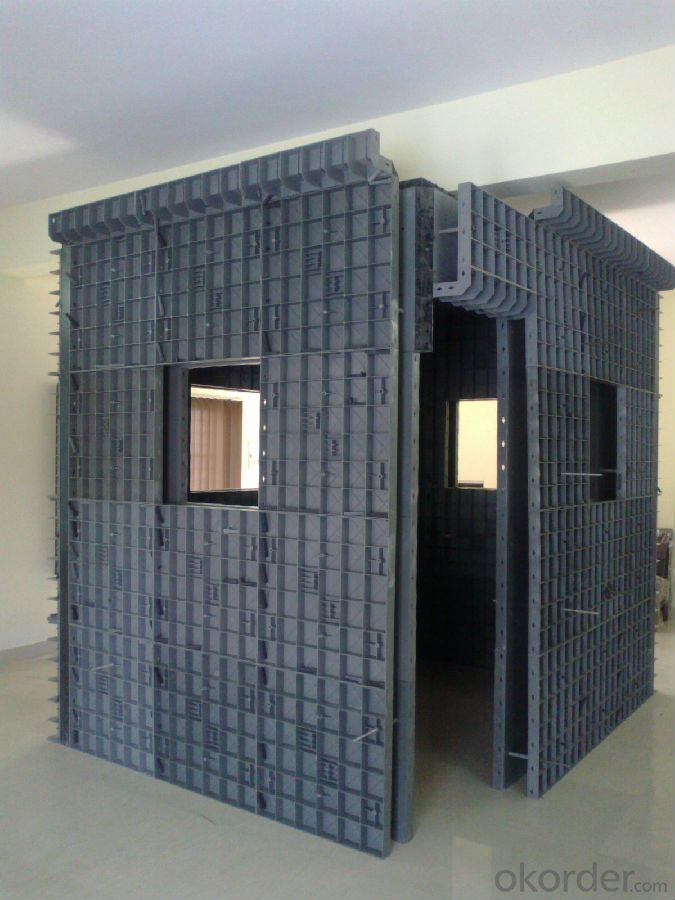
Scaffolding Jack Base Formwork Scaffolding Equipment Names with New Design
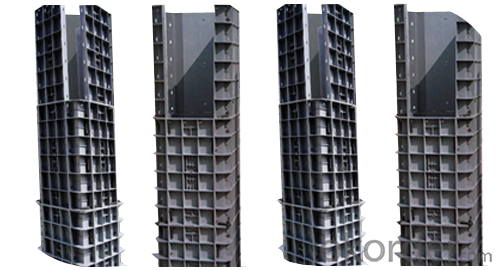
Advantage
* Good loading capacity
* Easy to assemble and dismantle
* Stable and durable thanks to its structual design & automatic welding quality
* Customized solution helps you work safe, save cost and convenient
* Excellent quality for formwork & scaffolding with wide choices
Packing
in bulk or in bundle, or as requested
Shipping
15-20 Days.
Normally small orders, it needs just 15-20 business days to the port. For goods with stock, it would be even shoter.
Scaffolding Jack Base Formwork Scaffolding Equipment Names with New Design
Other scaffolding & formwork products:
(1) Scaffolding System:
Including Ringlock Scaffolding System and accessories; Cuplock Scaffolding System and accessories; Kwikstage Scaffolding System and accessories; Haki Scaffolding System and accessories;
(2) Scaffolding Frame & Accessories:
Including Walk Through Frame Scaffolding; Ladder Frame Scaffolding; Accessories; we also can make scaffolding according to your samples or drawings.
(3) Scaffolding Couplers/Clamps:
We can produce all kinds of forged and pressed couplers, including British type couplers, American type couplers, German type couplers, Italian type couplers ,fence couplers, BRC coplers and so on. We also can produce according to your drawings or samples.
(4) Formwork System Scaffolding & Accessories:
Light Duty Shoring prop and Heavy Duty Shoring Prop; Wing nuts and Tie rods; RASTO clamp and so on.
FAQ Scaffolding Jack Base Formwork Scaffolding Equipment Names with New Design
Why Us?
We are one of the Top 500 in the world, largest construction materials supplier in China. Also we are a state-owned company and respond to every customer with large and also small orders.
We own professional manufacturers with powerful producing capacity.
Extensive and comprehensive quality control system
Excellent products with competitive prices.
Efficient services in pre and after sale.
Full energy with affluent experience team.
- Q: What are the different types of concrete additives and admixtures used with steel frame formwork?
- There are several types of concrete additives and admixtures that are commonly used with steel frame formwork. These include accelerators, retarders, plasticizers, air entraining agents, and corrosion inhibitors. Accelerators are used to speed up the setting time of the concrete, while retarders are used to slow down the setting time. Plasticizers, also known as water reducers, are added to improve the workability of the concrete, making it easier to pour and place. Air entraining agents are used to create small air bubbles in the concrete, which improves its freeze-thaw resistance. Corrosion inhibitors are added to protect the steel reinforcement from corrosion caused by the alkaline environment of the concrete. These additives and admixtures can enhance the performance and durability of concrete used with steel frame formwork.
- Q: What are the key safety features of steel frame formwork?
- The key safety features of steel frame formwork include: 1. Durability: Steel is a strong and sturdy material that can withstand heavy loads and external forces, ensuring the safety of workers and the structure itself. 2. Stability: The steel frame formwork system provides excellent stability due to its rigid structure. It can resist shifting or collapsing during concrete pouring, minimizing the risk of accidents. 3. Easy assembly and disassembly: Steel frame formwork is designed for quick and easy installation and removal. The components can be easily connected and disconnected, reducing the time workers spend on the construction site and minimizing the chances of accidents. 4. Adjustable design: Steel frame formwork systems often feature adjustable components, such as telescopic props and adjustable brackets. This allows for precise positioning and alignment, ensuring the formwork is secure and stable. 5. Safety accessories: Steel frame formwork is often equipped with safety accessories such as handrails, toe boards, and safety nets. These accessories provide additional protection for workers, preventing falls and injuries. 6. Fire resistance: Steel is a non-combustible material, making steel frame formwork highly resistant to fire. This feature enhances the overall safety of the construction site and reduces the risk of fire-related accidents. 7. Load-bearing capacity: Steel frame formwork is designed to withstand heavy loads, ensuring the safety of workers and preventing any structural failures. This feature is particularly important in high-rise constructions or projects with significant load requirements. 8. Compatibility with other safety systems: Steel frame formwork can be easily integrated with other safety systems, such as scaffolding or fall protection equipment. This ensures a comprehensive safety setup on the construction site, reducing the risk of accidents and injuries. Overall, the key safety features of steel frame formwork make it a reliable and secure option for construction projects. Its durability, stability, easy assembly, adjustable design, safety accessories, fire resistance, load-bearing capacity, and compatibility with other safety systems all contribute to creating a safe working environment for construction workers.
- Q: How long does it take to assemble steel frame formwork?
- The assembly time for steel frame formwork can vary depending on several factors, including the size and complexity of the structure, the workers' experience and skill level, and the availability of equipment. On average, completing the assembly process can take anywhere from a few days to a couple of weeks. For smaller or simpler structures, setting up and securing the steel frames may only take a few days. During this stage, the frames are positioned according to the design specifications, securely connected, and checked for levelness and alignment. Any necessary adjustments or modifications may also be made at this time. However, for larger or more complex structures, the assembly process can take longer. This is due to a higher number of steel frames to install and align, additional bracing and support systems to incorporate, and more intricate connections to make. In such cases, it may take several weeks to complete the assembly process, especially if there are any unforeseen challenges or delays. It is important to note that the assembly time mentioned here specifically refers to the steel frame formwork itself and does not include tasks such as pouring and curing the concrete, which will add extra time to the overall construction timeline. To determine the precise assembly time for steel frame formwork in a particular project, it is advisable to consult experienced construction professionals who can assess the project requirements and provide a more accurate estimate.
- Q: Can steel frame formwork be used for both concrete walls and slabs?
- Yes, steel frame formwork can be used for both concrete walls and slabs. Steel frame formwork is a versatile and durable system that provides support and containment for the concrete during the construction process. It consists of steel panels or frames that are assembled and locked together to create the desired shape and size for the concrete structure. This formwork system can be easily adjusted and reconfigured to accommodate various types of concrete elements, including walls and slabs. Additionally, steel frame formwork offers high load-bearing capacity, allowing it to withstand the pressure exerted by the wet concrete. Its rigidity and stability ensure precise alignment and smooth finishes for the concrete walls and slabs. Overall, steel frame formwork is a reliable and efficient solution for constructing both concrete walls and slabs.
- Q: Can steel frame formwork be used for both horizontal and vertical formwork applications?
- Steel frame formwork is suitable for both horizontal and vertical formwork applications. It is a versatile and sturdy system that can be effortlessly assembled and modified to accommodate different shapes, sizes, and heights of concrete elements. Construction projects often utilize steel frame formwork for creating walls, columns, beams, slabs, and other structural elements. This formwork system offers exceptional stability and support, making it appropriate for both vertical and horizontal applications. Moreover, steel frame formwork boasts impressive load-bearing capacity, durability, and reusability, making it a cost-effective option for construction formwork.
- Q: What is the maximum permissible deflection of steel frame formwork panels?
- The maximum permissible deflection of steel frame formwork panels is typically specified by the manufacturer and can vary depending on the specific design and application. It is essential to consult the manufacturer's guidelines or industry standards to determine the exact maximum permissible deflection for a particular steel frame formwork panel.
- Q: What are the different types of formwork stripping methods used with steel frame formwork?
- Steel frame formwork can be stripped using various methods. These include crane stripping, manual stripping, hydraulic stripping, automatic stripping, and panel stripping. Crane stripping involves using a crane to lift and remove the formwork panels from the structure. This method is ideal for large projects where multiple panels need to be removed simultaneously. Manual stripping, on the other hand, requires the panels to be manually taken off the structure. It is typically used for smaller projects or areas that are difficult to access with a crane. However, manual stripping requires more time and labor compared to crane stripping. Hydraulic stripping utilizes hydraulic systems to remove the formwork panels. This method is commonly employed for tall structures or areas where manual stripping is not feasible. It provides a controlled and precise stripping process. For more advanced projects with repetitive stripping requirements, automatic stripping is utilized. This method utilizes mechanical systems to remove the formwork panels and aids in boosting productivity while reducing labor costs. Panel stripping involves removing individual panels of the formwork one by one. This method is commonly used for projects with intricate geometries or when specific areas of the structure need to be stripped first. The choice of stripping method depends on factors such as project size, complexity, accessibility, and budget. It is crucial to select the appropriate method to ensure efficient and safe formwork removal during the construction process.
- Q: How does steel frame formwork contribute to better formwork stability in seismic zones?
- There are several ways in which steel frame formwork contributes to improved formwork stability in seismic zones. To begin with, the use of high-strength steel in the construction of steel frame formwork results in a robust and enduring structure. This strength is particularly vital in seismic zones, where the ground undergoes significant shaking and lateral forces. Unlike alternative materials such as wood or aluminum, steel has the capacity to withstand these forces and maintain its structural integrity. Moreover, steel frame formwork is purposefully designed with features that enhance stability in seismic zones. It often incorporates additional bracing and reinforcement elements that effectively distribute seismic forces throughout the formwork system. These reinforcements prevent the formwork from collapsing or distorting during an earthquake, ensuring that it can safely support the weight of the poured concrete. Additionally, steel frame formwork offers a high degree of adjustability and customization. This adaptability allows it to be tailored to meet the specific requirements of a seismic zone. The formwork can be easily modified to accommodate various shapes and sizes of concrete structures, which is particularly important in earthquake-prone areas where buildings often have irregular designs to withstand seismic forces. Furthermore, the reusability of steel frame formwork makes it a cost-effective solution in seismic zones. After each use, the formwork can be disassembled, inspected, and reassembled for the next project. This reduces the need for frequent replacement and minimizes waste, making it an environmentally-friendly option as well. In conclusion, steel frame formwork offers exceptional stability in seismic zones due to its high-strength construction, additional reinforcements, adjustability, and reusability. Its ability to withstand the forces generated by earthquakes ensures the safety and integrity of the concrete structures being constructed in these areas.
- Q: What are the advantages of steel frame structure
- Earthquake: the roof of low rise villas are sloping roof, the roof structure basically adopts the triangular truss system made of cold-formed steel, light steel members in sealed end structural plate and plaster board, formed a very strong "plate structure", this kind of structure system with the capacity of earthquake and stronger resistance to horizontal loads, suitable for seismic intensity of 8 degrees above the area.
- Q: How does steel frame formwork contribute to better formwork stability in high wind conditions?
- In high wind conditions, the use of steel frame formwork improves formwork stability. This is achieved through the provision of a strong and rigid structure capable of withstanding the forces exerted by strong winds. The steel frames are specifically designed to be robust and durable, preventing any deformation or collapse under the pressure of high winds. One major advantage of steel frame formwork is its ability to resist lateral forces. By connecting the steel frames using bolts and braces, a solid and stable structure is created. This structure can effectively withstand the lateral load of the wind, preventing any movement or shifting of the formwork. Consequently, the concrete being poured remains in place, avoiding any leaks or spills. In addition, steel frame formwork is designed with a low surface area to reduce wind resistance and minimize the impact of wind loads. The streamlined design allows the wind to easily pass through the formwork, reducing the pressure exerted on the structure. This design feature helps to maintain formwork stability and minimize the risk of damage caused by high winds. Furthermore, steel is a strong and durable material that can withstand the impact of wind forces without compromising its structural integrity. Unlike wood or plastic, steel is less prone to warping, bending, or breaking under the pressure of high winds. This ensures that the formwork remains stable and secure, even in challenging wind conditions. Overall, steel frame formwork offers a reliable and robust solution for maintaining formwork stability in high wind conditions. Its strength, rigidity, and low wind resistance enable it to withstand the forces exerted by strong winds, ensuring that the formwork remains in place and the concrete pouring process proceeds without any issues.
Send your message to us
Scaffolding Jack Base Formwork Scaffolding Equipment Names with New Design
- Loading Port:
- Tianjin
- Payment Terms:
- TT OR LC
- Min Order Qty:
- 8000 set
- Supply Capability:
- 50000 set/month
OKorder Service Pledge
OKorder Financial Service
Similar products
Hot products
Hot Searches
Related keywords
